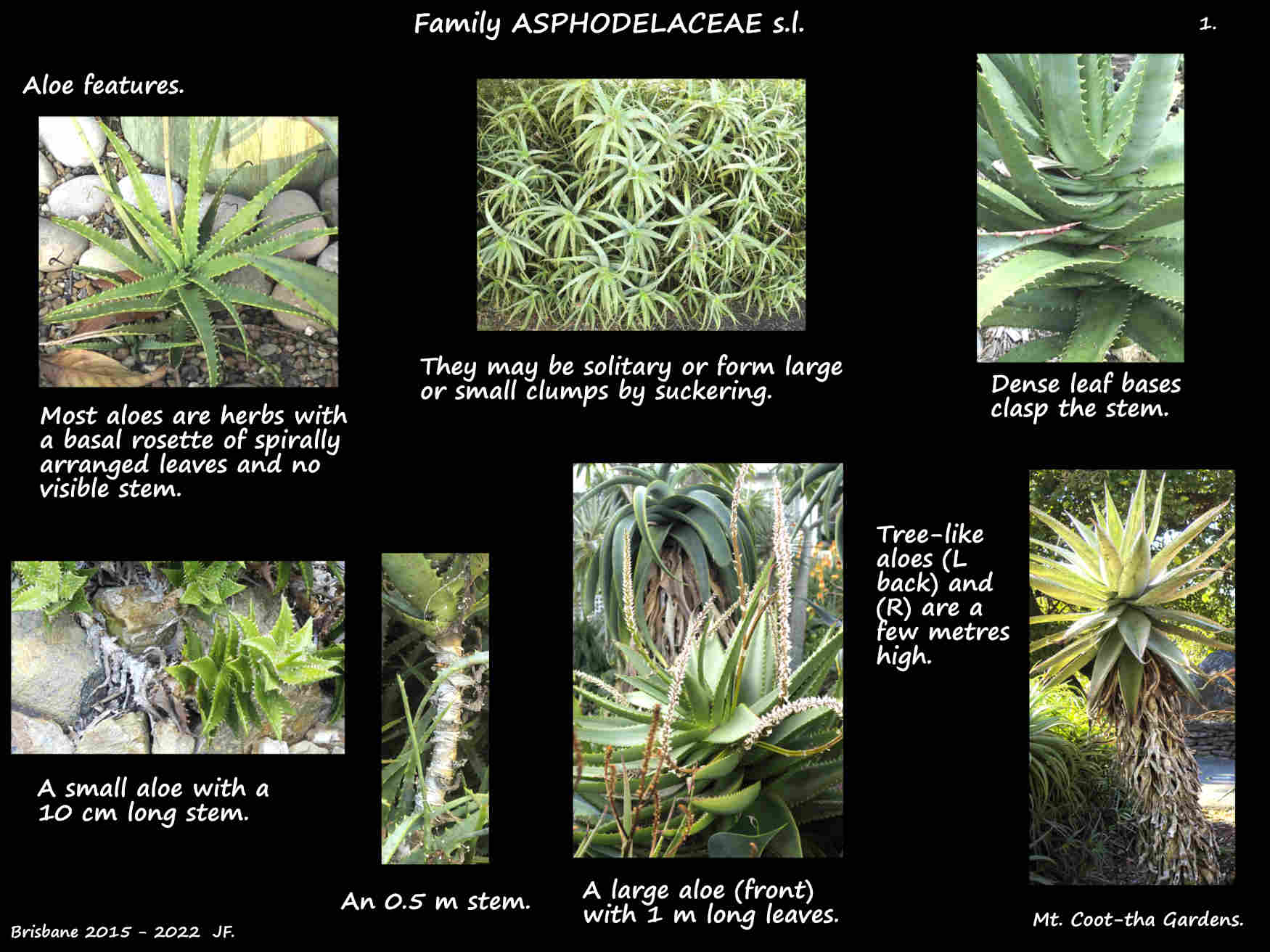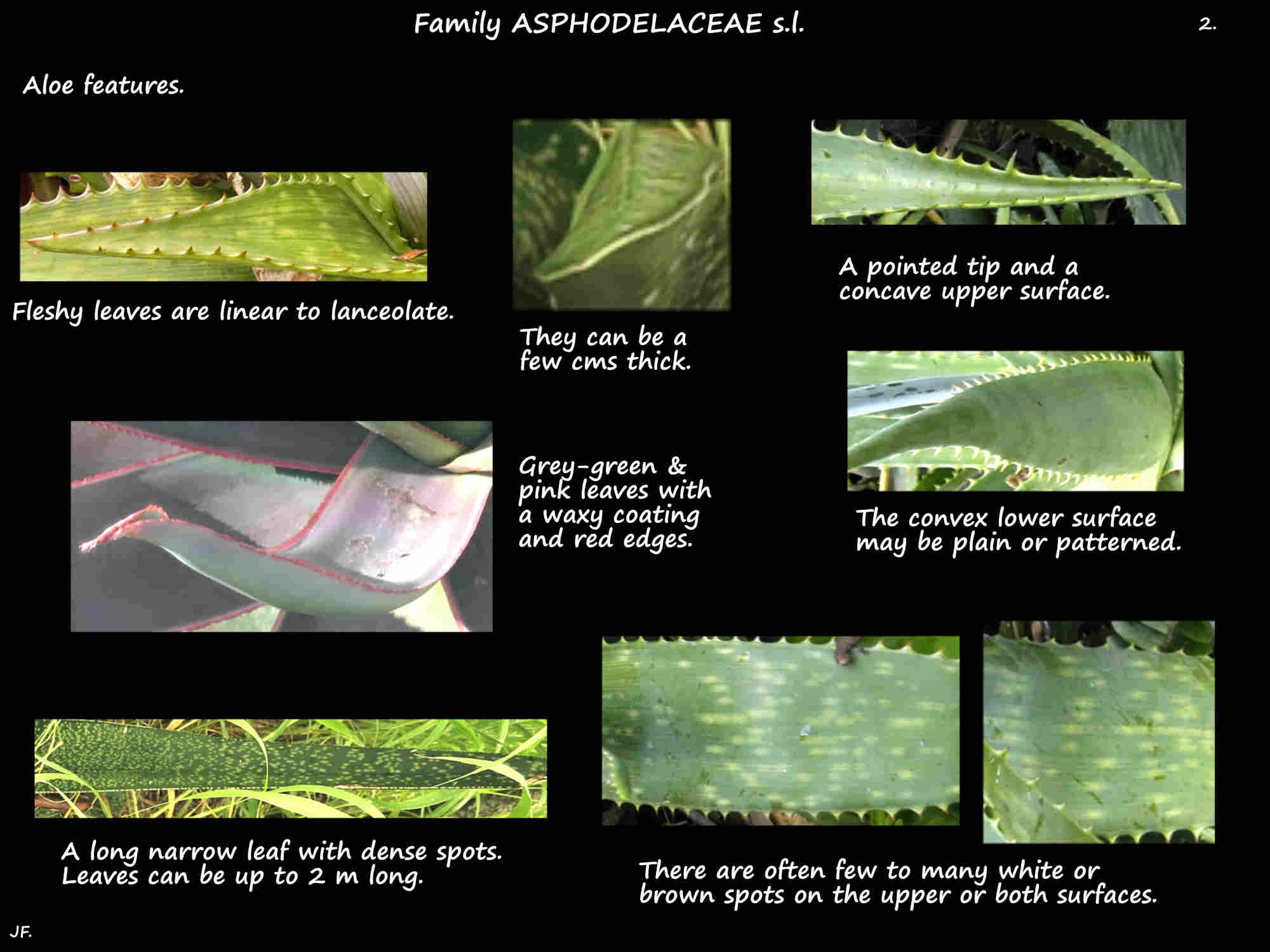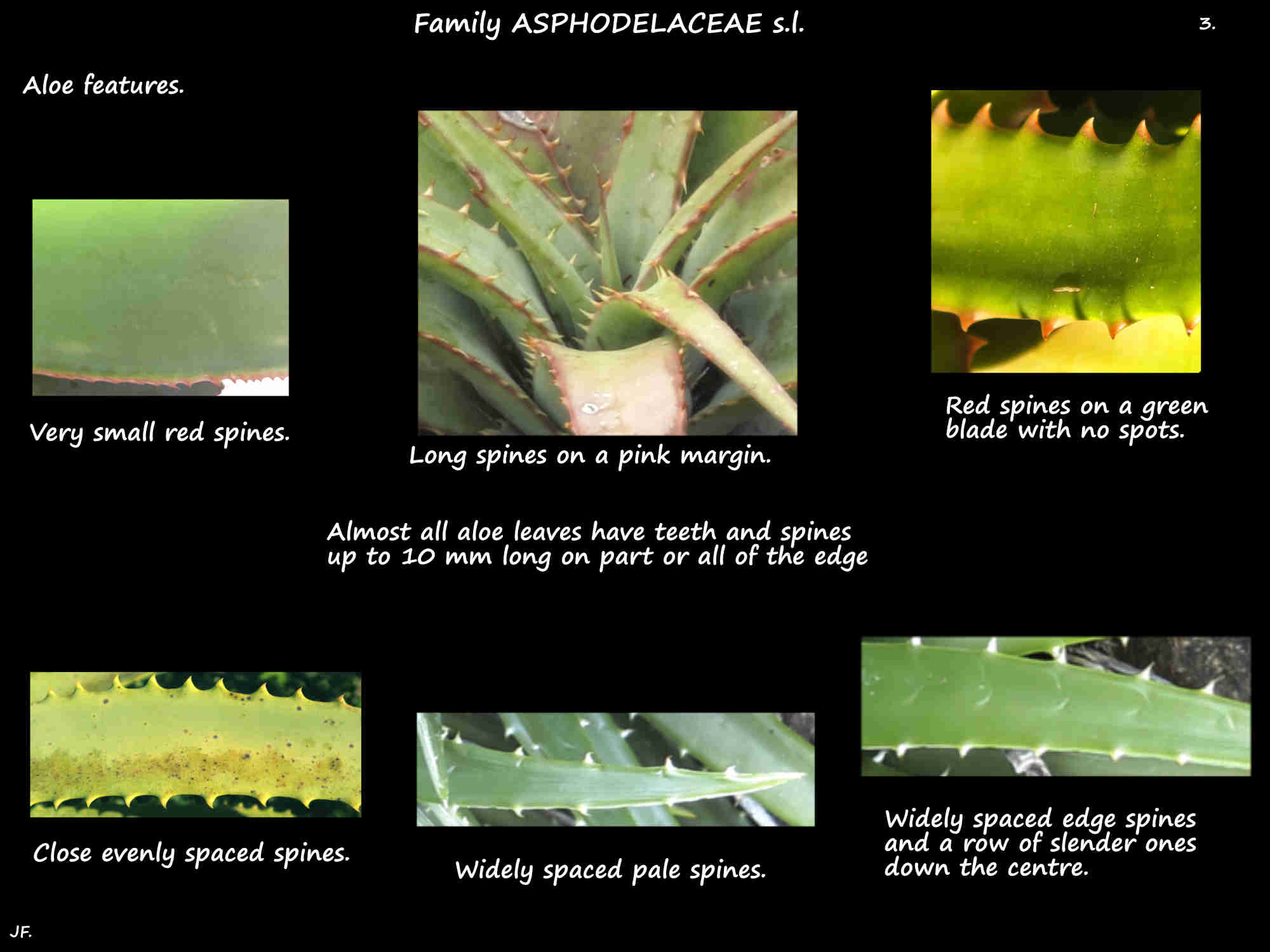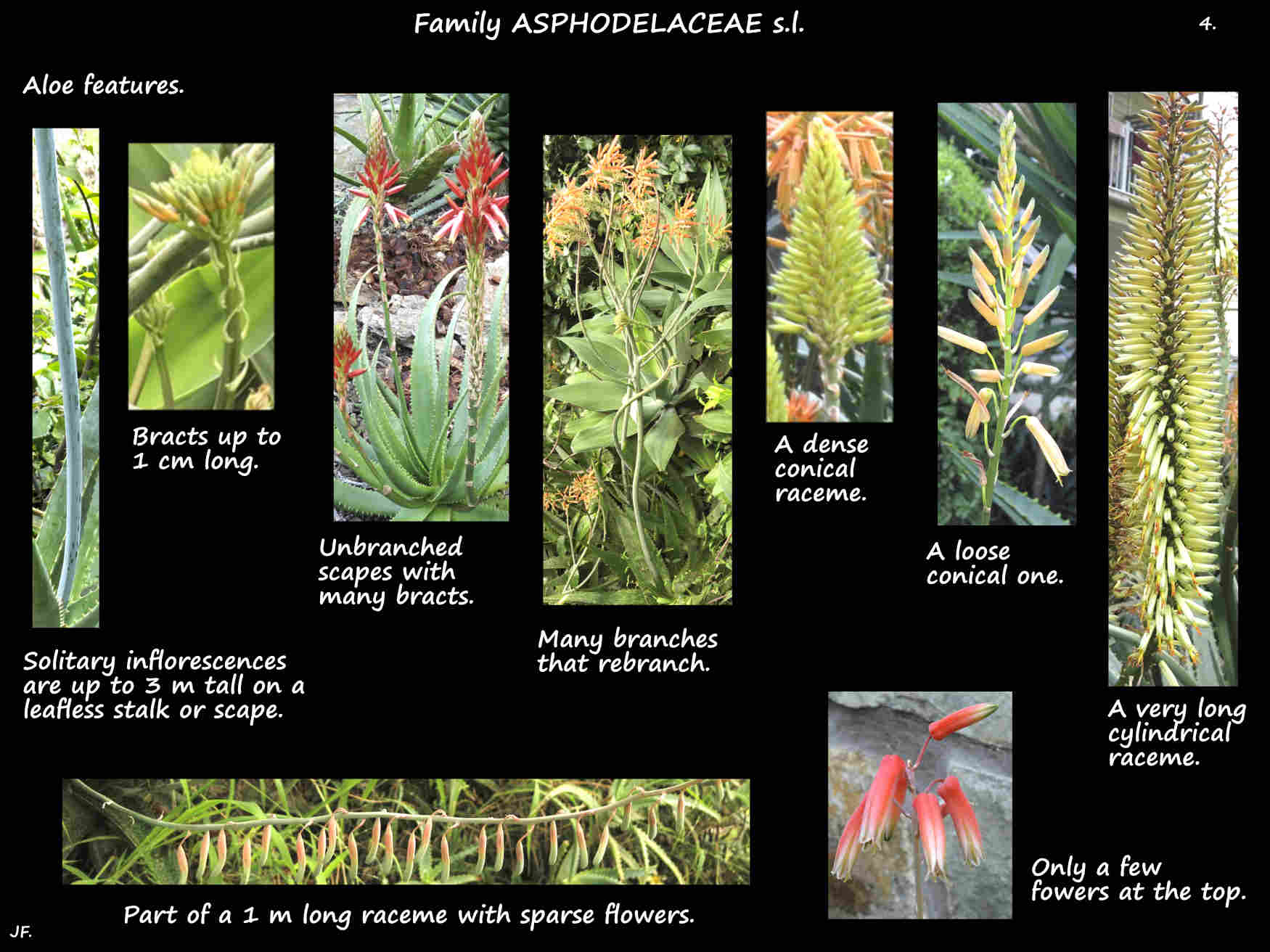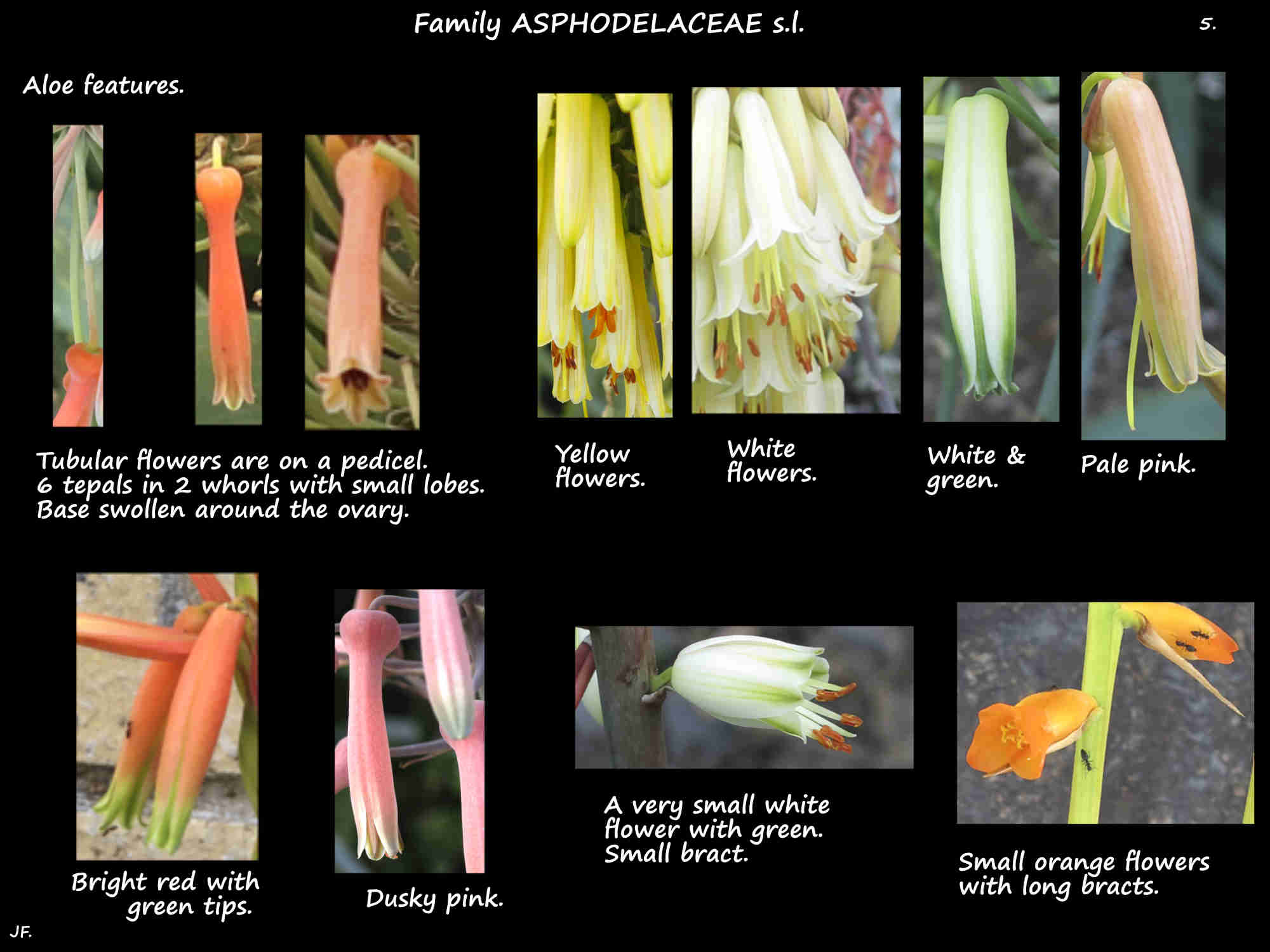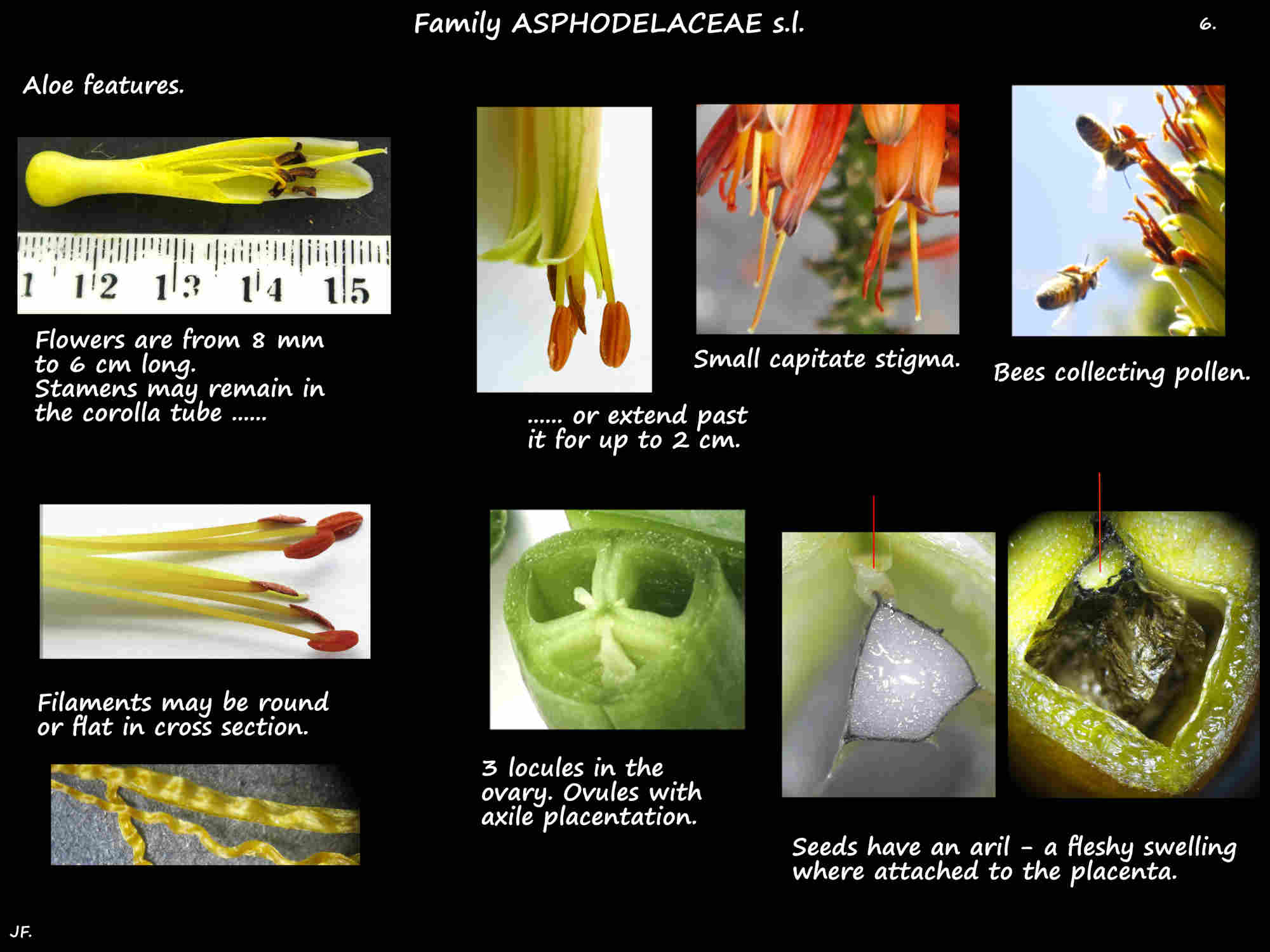Aloe.
Previously in the Liliaceae family or their own family Aloeaceae they are now in the subfamily Asphodeloideae in a
loosely defined family Asphodelaceae s.l.
Not all follow the latest AGP classification and in Australia aloes can be seen under Aloeaceae, Asphodelaceae or Liliaceae.
The range of species in the genus varies from 200 to 800 with The Plant List recognising 558 species with 676 synonyms.
Many are native to Africa.
Most of the species are herbs with some shrubby plants, some tree-like ones and a few climbers.
The smallest are grass-like plants a few cms high and wide.
The largest tree-like ones, up to 18 m high have a thick trunk in relation to the rest of the plant.
They are all perennials with some of the tree-like ones living for over 100 years.
The often succulent roots may be tuberous.
All aloes have a rosette of leaves with low growing ones having a basal rosette with no visible stem.
Others develop a short stem while the tree-like plants have a terminal rosette of leaves.
Rosettes are usually solitary but some sucker profusely forming large clumps.
They are sometimes divided into groups based on their morphology e.g. the grass aloes, tree aloes, scrambling aloes
and maculate aloes with spotted leaves.
The simple alternate linear to lanceolate leaves can be in a spiral or 2 ranks (distichous).
With their wide bases clasping the stem the mostly succulent leaves can be erect, spreading or curved back.
They range from a few mms up to 1.5 or 2 meters long and 0.4 mm to 22 cm wide.
Many are thick and succulent but some are thin.
In cross section they can be flat, round or U or V-shaped sometimes with a marked keel.
The surface can be smooth, nodular or have a few spines on the midrib below up to dense spines on both surfaces.
The edge almost always has teeth or spines from 1 to 10 mm long at the base or around the whole edge.
(Teeth are small fairly regular lobes or projections that point forwards while spines are thin, stiff structures
that are typically sharp but may be soft.)
Some have bristles or hairs on the edge (ciliate).
Leaves may be bright green, bluish or grey due to a waxy coating or shades in between.
There may be stripes or mottling and when a plant is stressed the leaves may redden.
The parallel veins are often not visible on the surface.
Solitary erect axillary inflorescences are up to 3 m tall.
They consist of a leafless stem or scape with flowers at the top.
The scape can be smooth, have small spines at the base or a few to many floral bracts from 1 to 3 cm long.
The upper section can be unbranched or have up to 12 branches with some rebranching to form a candelabra-like shape.
Each branch is a raceme which is an unbranched stem with flowers on a pedicel and they open from the bottom up.
The racemes can be from 1 to 80 cm long and up to 9 cm wide.
They can be cylindrical, conical or form an umbel-like head where all the flowers arise near the top of the stem.
Flowers can be sparse or dense (congested).
The pedicels are from a few mms to 4.5 cm long and the flowers are 8 mm to 6 cm long.
They are frequently pendant but can spread out or be horizontal.
Flowers have a perianth of 6 similar segments or tepals in two whorls of 3.
The outer whorl (sepals) may be free, fused at the base or almost to the top.
The inner whorl (petals) may be free but their lower half is often fused with the sepals.
The petal lobes may have a rounded or slightly pointed tip that spreads out or curves back.
The tube is usually straight but in some species it is bell-shaped.
The base of the tube may be swollen around the ovary and up to 14 mm across.
The mouth is sometimes bilabiate.
Most flowers are shades of yellow or red but others are orange, green, pink, salmon plus some cream ones.
Flowers may have 2 colours e.g. red with a yellow base, red with green lobe tips or pink with darker stripes.
Some have a light to heavy powdery bloom which dulls the bright underlying colour.
There are 6 stamens in two whorls of 3 that are inserted onto the receptacle at the base of the ovary.
The anthers have 2 pollen sacs or thecea each with two chambers that eventually fuse.
Anthers open inwards through longitudinal slits.
The anthers may lie within the perianth tube but commonly extend past it for a few mms up to 2 cm.
They may wither and retract after the pollen is released which is before the stigma becomes receptive.
The superior ovary, of 3 fused carpels has 3 (1) locules each with 2 to many ovules with axile placentation.
The ovary is usually green but at least one species has 3 wide red lines down it.
There is a single apical style that may extend up to 2 cm past the perianth tube.
There are septal nectaries at the base of the ovary.
The fruit are almost always a loculicidal capsule and rarely a berry.
The flattened and roughly triangular grey or black seeds sometimes have a large or small wing.
They have a fleshy thickening or aril where they were attached to the placenta.
Many species hybridise easily and there are numerous cultivars with nearly 40 available in Australia.
Hybrids between Aloe and Gasteria species are also common.
J.F.

